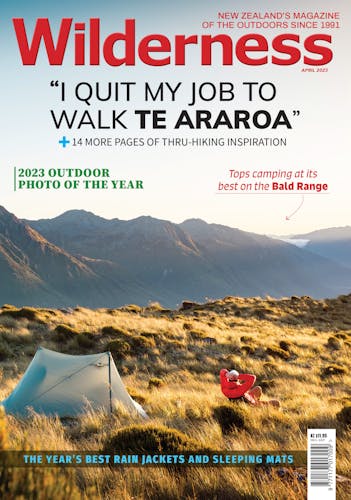For those wanting to go the distance in the Walk1200km challenge, looking after your feet is priority number one.
It’s estimated you’ll walk 120,000km over your lifetime – enough to go around the world three times.
For those doing the Walk1200km challenge, that distance is likely to be even greater.
Yet despite the central role feet play in our lives, few people give them the care and attention they deserve.
“I think you’ve got to look at how much you want to enjoy walking,” says Merivale Podiatry owner and lead podiatrist Sophie Walls. “If you’ve got sore feet, that’s pretty miserable.”
Podiatrists treat foot problems and provide advice on foot care, helping to manage those annoying and sometimes debilitating niggles.
Walls’ clinic offers a consultation specifically for walkers and she says it’s mostly about education, covering tips on footwear, socks and hygiene.
She says that getting these three right will enable people to self-care most of the time and enjoy problem-free feet.
Common issues for walkers include blisters, corns and calluses, and nail injuries, with ill-fitting shoes often to blame.
To avoid this, Walls encourages new walkers to get a footwear prescription.
Senior podiatrist Kirsten Harvey says the right shoe depends on a person’s foot type. It also depends on what kind of walking they’ll be doing; for example, a running shoe is more suitable for urban walks than a hiking shoe.
When it comes to socks, Walls says people can be guided by personal preference but shouldn’t skimp on price: “Getting people to understand the value in quality is a big part of our job.”
Moisture-wicking socks and footwear that leave feet cool and dry can reduce the onset of blisters and athlete’s foot, a fungal infection characterised by raw, cracked or scaly skin, redness, and itching.
Regularly washing and drying feet, changing socks, and airing out footwear each day can help.
Applying an antimicrobial gel, provided it doesn’t aggravate the skin, is also advised.
Calluses (areas of hard, thickened skin) can be hotspots for blisters, so it will pay to get them trimmed before a big tramp, and keeping toenails trimmed can help prevent nail injuries.
Walls says if walking has caused problems in the past, a product such as Hikers Wool may be needed as well as advice on blister care.
Walls has seen many Te Araroa Trail walkers and is surprised by how underprepared some are, including a man who thought he’d be able to complete the trail in one pair of shoes.
You should visit a podiatrist if you’re in pain, but Walls wishes people didn’t wait that long. She recommends an annual foot health check.
“You need to value what your feet do.”
How long will a pair of shoes last?
Challenge participant Kate Wright asked the Walk1200km Facebook group this question. Here’s a selection from the 80 responses.
“Around 600-800km is about when the inner cushioning has deteriorated, though you might get up to 1000km from the soles.”
– Glen Hill-Willis
“1000km or I (will) never buy that brand again. Most of my shoes push to 2000km. Just keep them clean and never let them dry too fast.”
– Tony Sharpe
“I always have a few pairs of shoes on the go and never wear the same pair two days in a row. It sounds expensive but they need to recover, too.”
– Kate Holley
“I do about 30-40km a week on average and would generally be replacing my shoes every 5–6 months or so.”
– Melissa Waswo
And here’s what Gary Melhuish from Walk1200km footwear partner Salewa had to say on the matter: “Walking and hiking shoes do use an EVA compound in lighter products and a more durable polyurethane midsole is used in more sturdy footwear. Upper and outsole material are also important factors in shoe longevity and we do see Salewa footwear lasting in excess of 1000km so long as they haven’t been used extensively in terrain they weren’t specifically designed for. Aftercare on leather footwear is important, especially if they have been through a number of wet-dry cycles.”








